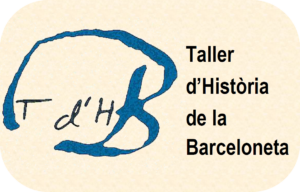
3 February 1753
It is not always that a city or a neighbourhood can celebrate its birthday. Barceloneta can.
On February 3, 1753, Domingo Fernandez del Monte, revenue administrator, placed the foundation stone in one of the first three houses to be built, where the legend could be read: “The formation of this village was on the February 3, 1753”.
The administrator built the first houses as a model for those that followed. The houses had to be single-family town houses, two floors high – ground floor and first floor –, and they had to have a roof terrace. There was a reason for this height. The cannons of the Ciutadella were pointed out to the see and if they fired they could drag down higher houses. They were all the same, built of brick, of ten rods in a quarter measure and seven of height, as indicated in the deeds. The orientation was North-South to protect them from the so-called Vent de Llevant – east wind –, with all the windows facing outside which allowed a good ventilation of all rooms. The facades were topped by a triangular fronton, decorative spirals above the windows, and an iron balcony. If the house was the beginning of the street, it should have a mark and the number of the block. To be homogenous, the colour of the facade was also specified in the deeds.
 Many of those affected by the demolition of the barracks applied for permission to build their own buildings. The construction of the Barceloneta meant the privatization of public land. The requested plots were granted with free “alou” – full ownership – and were exempt from taxes to the cadastre and “lluïsme”, a right that was paid for a direct dominion of the land to the feudal lord. They were also granted in perpetuity. With the permission granted, it was possible to build the house providing it was always supervised by an engineer. Thirty months after the first stone, eight streets had already been built. Few years later, the demand for new buildings proved to be a success.
Many of those affected by the demolition of the barracks applied for permission to build their own buildings. The construction of the Barceloneta meant the privatization of public land. The requested plots were granted with free “alou” – full ownership – and were exempt from taxes to the cadastre and “lluïsme”, a right that was paid for a direct dominion of the land to the feudal lord. They were also granted in perpetuity. With the permission granted, it was possible to build the house providing it was always supervised by an engineer. Thirty months after the first stone, eight streets had already been built. Few years later, the demand for new buildings proved to be a success.
